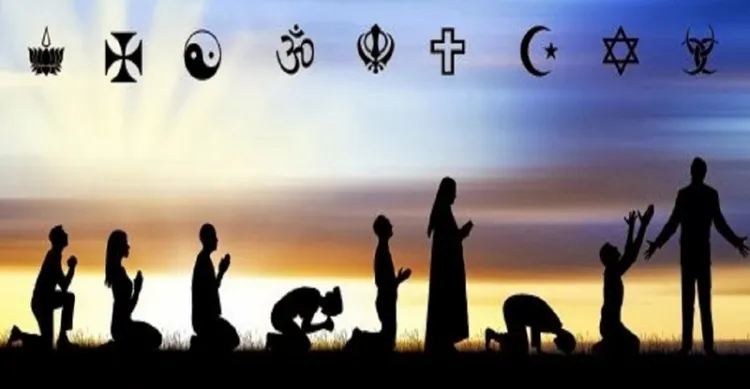
Yoga is very popular in India and around the world. But many people ask: Is yoga a religion? This article clears the doubts. We explain where yoga comes from. We explain what it means today. And we answer the common myths many believe.
Origins of Yoga in India
Yoga began centuries ago in India. It has roots in Hinduism, Buddhism, and Jainism. Early Hindu texts like the Upanishads mention yoga. Jain tradition also has yoga as central to spiritual practice. Ancient Indian philosophers organized yoga into systems. Sage Patanjali gave us the Yoga Sutras. These describe yoga as more than body poses. They teach mind control, ethics, meditation, and spiritual liberation.
Modern yoga, especially physical posture-based yoga, is often traced to 19th and early 20th century developments. Some studies show that many modern asanas came from early Indian gymnastics combined with new ideas from the West. Thus, today’s “yoga” is a blend of ancient philosophy and modern fitness practices.
Yoga Is Not a Religion
Many leaders and experts have said yoga is not a religion. In India, former Vice President M Venkaiah Naidu clearly stated: “Yoga has nothing to do with religion.” He called it an ancient science of well‑being, a holistic approach to life. Kerala’s Chief Minister echoed this. He pointed out that yoga postures do not belong to any single religion. Anyone can practice them, regardless of faith or caste. At the United Nations too, experts said yoga goes beyond religion. They called it a tool for peace, health, and sustainable living.
Yoga is not worship. It does not require conversion. There is no temple or deity worship. Many people practise it just for physical and mental health.
Why Do People Think Yoga Is a Religion?
Some people confuse spiritual roots with religious practice. They hear Sanskrit words or mantras and feel it is religious. For example, chanting “Om” or “Om Namah Shivaya” during yoga can give such a feeling. However, chanting is optional. Many modern classes do not include it.
A 2019 survey found that 57% of people who never tried yoga believed it needed religious chanting or worship. This fear discouraged them from even trying. In truth, most yoga teachers offer a secular version. They teach physical poses (asanas), breathing (pranayama), and mindfulness, with no spiritual elements.
Some religious groups worry that yoga may conflict with their own faith. For example, certain Christian authorities in the U.S. rebranded yoga as lifestyle fitness. They removed spiritual references to maintain religious boundaries. Those concerns sparked debate. But most experts argue that yoga’s philosophical roots are not tied to worship.
Secular Evolution of Yoga
Over time, yoga has evolved into a secular, global practice. In India and abroad, many yoga schools focus on health and fitness. They do not teach any religious or spiritual doctrine.
Yoga has become medicalized and neutral. Many practitioners use it to reduce stress, improve flexibility, and calm the mind. These goals are secular. In the West especially, yoga has been transformed into a personal wellness practice, with no requirement of faith.
What Are Common Myths—and the Truth?
Here are some myths people often believe—and what experts say:
- Myth: Yoga is a religion.
- Truth: Yoga started in spiritual traditions but today it is not tied to worship or doctrine.
- Myth: Yoga is only for Hindu followers.
- Truth: Anyone from any religion—or none—can practise yoga. No conversion is needed.
- Myth: Yoga requires chanting or mantras.
- Truth: Chanting is optional. Many classes avoid it entirely. Asanas and breathing are enough.
- Myth: Only flexible or spiritual people practise yoga.
- Truth: Yoga is for all. It has styles for beginners, seniors, or those who want strength. It helps mind and body.

Read more: Yoga for Gamers: Poses to Counter Long Hours of Screen Time
Why Yoga Works in India Today
In India, yoga is often linked to cultural heritage. The government promotes Yoga Day, and many public leaders join in. For example, in June 2025, Union Minister Pralhad Joshi led a Yoga Day event at the UNESCO site in Pattadakal. He spoke about yoga’s physical, mental, and spiritual benefits. He said it promotes harmony and global unity.
At the same time, Indian leaders stress that yoga is not religious. They teach that its spiritual roots belong to cultural history—but the practice today is open and inclusive.
Practical Tips for Indian Learners
- Choose a style that fits you. Some classes focus on health and flexibility. Others include meditation or chanting. You can choose.
- Ask the teacher. If you prefer no spiritual content, let the teacher know.
- Respect the origins. Even if you practice yoga for fitness, it helps to learn some history. It shows respect for Indian culture.
- Practice safely. Yoga is not easy. Some styles are strong and require effort and balance. Begin with beginner classes.
Final Thoughts
So, is yoga a religion? No—it is not. It has roots in spiritual traditions. But modern yoga is a wellness practice open to all. It uses physical poses, breathing, and awareness to improve life. You do not need to change your faith to practise yoga.
Yoga is not worship. It is not conversion. It is a science of living, a lifestyle. And as many leaders say in India, it “has nothing to do with religion.”
Whether you practise in a studio, at home, or in a park—yoga welcomes everyone. Namaste.
Author: Sonam










